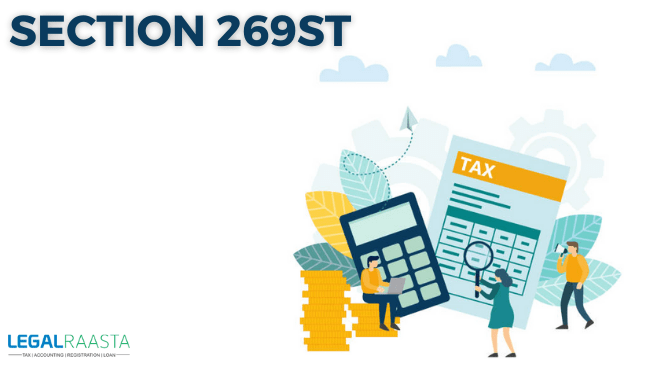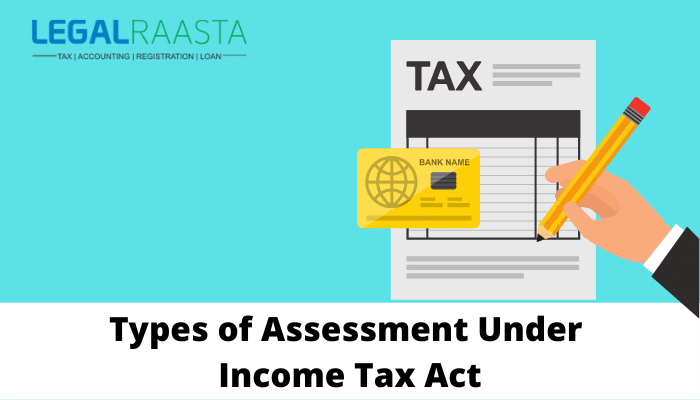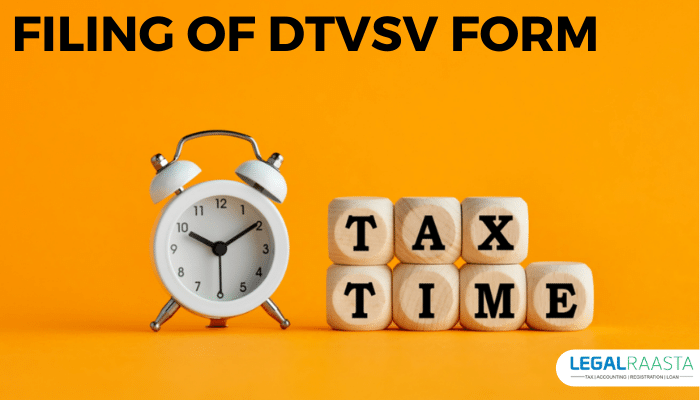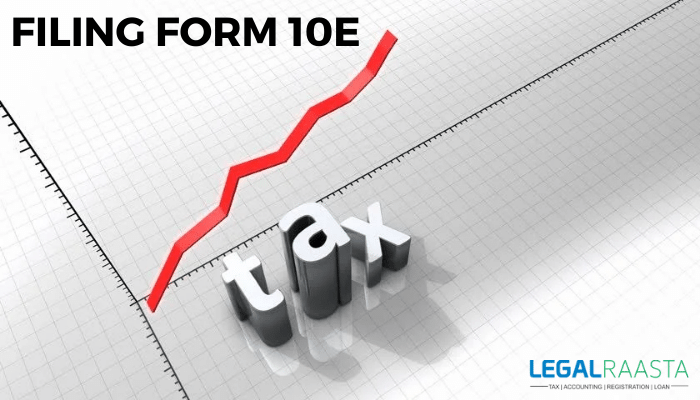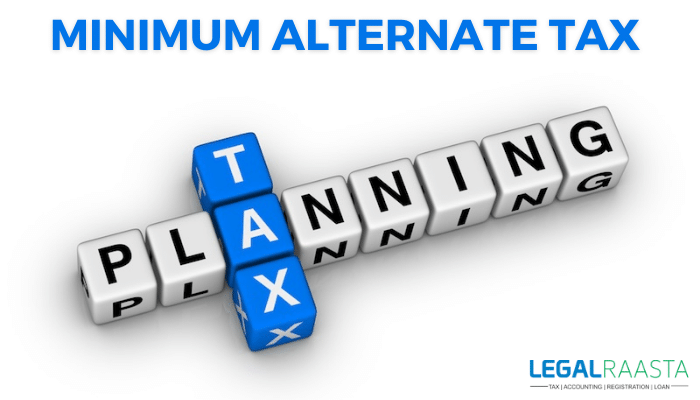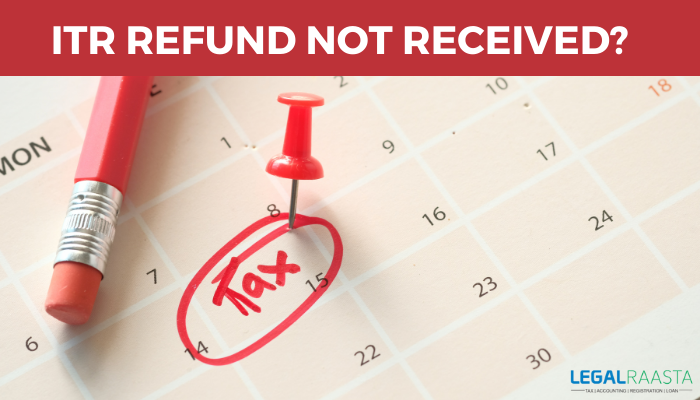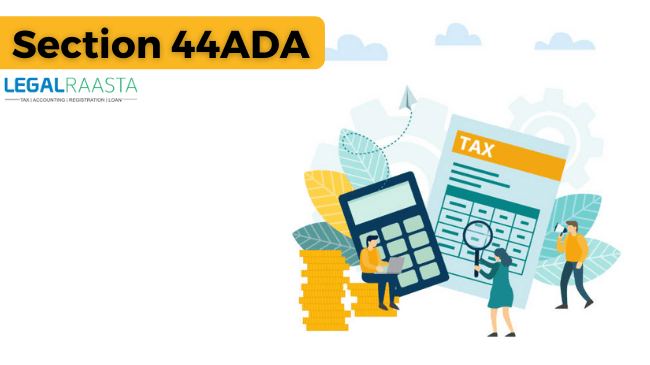Section 269ST of Income Tax Act
Black money is a major threat to the Indian economy. Section 269St was inserted in Income Tax Act,1961 to curb the problems caused by black money.
Black money has been a major threat to our economy. Many taxpayers use only cash transactions in order to evade their tax liabilities and their responsibility towards the country. Cash transactions are not very easy to track which eventually leads to the circulation of black money in the market. This flow of black money leads to a loss of revenue for the government via the payment of taxes. Therefore government inserted Section 269ST to the income tax act,1961 with a view to curb the spread of black money in the market.
Prior to section 269ST
Provisions of Section 269SS and section 269T were applicable before section 269ST was introduced. The provisions in this section did not allow acceptance or repayment of loans, deposits via cash that exceeds Rs.19,999/- the provisions were introduced in order to reduce the use of black money. However, the outcome was not the same as expected. There were provisions of penalties under section 269SS and section 269T. also, there were penalties if someone violated the provisions.
An individual is not liable if it appears to the court that he acted with bona fide intentions.
No penalty would be levied in the following cases:
- If the transaction is genuine prima facie;
- if the transaction is recorded in the account books of the parties involved
- if the transaction is done with bona fide intentions, and there is no tax evasion; and
- if the identities and confirmation of parties are who are involved in the transaction are on record.
Introduction of Section 269ST
The Finance Act of 2017 introduced section 269ST in Income Tax Act. It came into effect in April 2017. The main purpose of this section is to cut down the situation of an increase in black money. It was implemented with a view to restricting cash-only transactions in order to control black money that was not achieved by previous sections.
Section 269ST of the Income Tax Act states that no person/ individual must receive cash that exceeds Rs.2 lakh or more in:
(a) in aggregate from a person in a day; or
(b) in respect of a single transaction; or
(c) in respect of transactions relating to one event or occasion from a person,
The amount which exceeds this cash limit may be paid through cheques, drafts, or by using an electronic clearing system through a bank account.
Now let us analyze the clauses to understand them better.
- One payer; one or many transactions, one day.
The first clause states that amount of 2 lakhs or exceeding 2 lakhs cannot be received by an individual in a day. The prerequisites for the applicability of this clause are:
– there should be a single-payer
– there should be a single receiver
– cash received must be equal to or higher than 2 lakhs
– payment should be received in a single day
Let us try to understand it better with the help of examples
-If Mr. Z receives a single payment of Rs. 1 lakh from Mr.Y, in a day, so in this case, there is no violation of this section. But if Mr. Z receives a single payment of Rs.2 lakhs in a day from Mr. Y there is a violation of this section as it exceeds the prescribed amount.
-If Mr. X receives Rs. 2 lakhs from Mr. Y then there is no violation but on the other hand, if Mr.X receives Rs.1 lakh each from Mr. Y and Mr. Z in a day and the transaction is not a single joint transaction then there is no violation.
- One payer, single transaction, one or several days
Clause (b) puts restrictions for each transaction irrespective of the fact whether the amount is received in single or several days. This limit will work altogether with the prescribed limit of aggregate receipt per day from a single entity. According to the clause, an entity can only receive an amount less than Rs 2 lakhs through cash in respect of a single transaction. Therefore the prerequisites for the applicability of the second clause:
-there should be single-payer
-there should be a single receiver
-transaction should exist to which the payment is related
-aggregate amount of cash received in a single or several days should amount to Rs. 2 lakhs or more.
When the part amount is received through banking mode and the balance amount is received via cash then the applicability of the whole limit of an amount less than Rs. 2 lakhs will be considered for the amount received through cash and the amount received through permissible modes will not be considered.
Examples:
If Mr. X sells goods of Rs. 3 lakhs to Mr. Y via two separate bills of Rs. 1.50 lakhs each. In this case Mr. X can receive Rs 3 lakhs from Mr. Y through cash in two or more days complying with the limit of per day per entity as in this case the limit of per transaction as well as per day per entity is not crossed.
If Mr. X sells goods to Mr. Y through a single bill of Rs. 3 lakhs then the amount below Rs. 2 lakhs can be received via cash from Mr. X to Mr. Y. in this case the balance amount will have to be received through permissible banking modes. If the bill amount is above the prescribed limit that is Rs. 2 lakhs or more , the payee cannot receive amount of Rs. 2 lakhs or more.
- One receiver; one payer, multiple transactions, single event
Clause (c) of section 269ST restricts every type of transaction which are related to any single event or occasion. According to the clause, an entity can only receive less than Rs. 2 lakhs for all transactions which are related to any single event or occasion. The payment may be made against several transactions that are scattered or spread over several days but related to a single event or occasion. Therefore, the prerequisites of this clause are as follows:
- A single-payer
- A single receiver
- There shall be a single event or occasion to which the payments are related
- The duration of the transactions can be more than one or several days.
No specific definition or description has been provided under section 269ST of the income tax act. The main purpose of these provisions is that people tend to spilt their payment into portions to avoid the applicability of the provisions.
Example:
If an individual is in charge of customer providing service in marriage and provides services such as renting garden for a marriage reception, florist services, decoration services. He has issued three different bills of Rs. 1.50 lakh each for each separate service provided ( total bill 4.50 lakh). In this case, the individual can receive not exceeding Rs . 2 lakh from his customers through cash for all the transactions. If the whole amount of Rs, 4.50 lakhs is taken through though it is not crossing the limit of per day per entity. Since in this case all the transactions are related to the single occasion that is marriage so the total limit of less than Rs . 2 lakhs will be a consolidated limit for all the related transactions.
Exceptions of section 269ST
There are certain exceptions that apply to provisions of section 269ST
The provisions of the section shall not apply to:
- Government
- Any banking company, post office savings bank, or cooperative bank
- Transactions of nature mentioned in section 269SS
- Such other class of persons or persons or receipt which the central government vides its notification shall specify.
Penalty in case of contravention of provisions of section 269ST
- Any individual who violates the provisions provided under section 269ST of income tax act by receiving in cash amount of Rs. 2 lakh or exceeding rs .2 lakhs shall be liable to pay a particular sum of amount as penalty for the violation. However, if the individual has valid reasons for the contravention and if the court is satisfied by the reasons then no such penalty will be levied on the said individual.
- The main intent behind the insertion of section 269ST of the income tax act is to pave way for the digital economy and also try to curtail the facilitation of black money in an effective way.
- A new section 271DA was introduced under the Income-tax act. This section states that any person who receives any sum which violates the provisions laid down in section 269ST will be liable to pay as a penalty a sum equal to the amount.
- Penalty laid down under section 271DA (1) shall be imposed by the joint or additional commissioner of income tax. If the individual fails to establish good and sufficient reason then the penalty shall be levied on him.
CONCLUSION
Section 269ST was introduced with the view to curb the problem of black money which has terrorized the Indian economy for the longest of time. The provisions under section 269ST have affected a large number of populations and to avoid attracting penalties one should be careful while doing transactions. Taxpayers should try their best to comply with the provisions laid in the section while keeping the goal of the government that is to try to make the economy cashless in mind.
Limiting cash transactions can be a two-way opportunity for the country. It can help to curb the menace caused by black money and at the same time help to develop India on the digital platform as a modern economy. Section 269ST lays down ways to limit the individual in involving in black money transactions. And to justify the contravention a reasonable cause has to be asserted which is difficult than proving the presence of good and sufficient cause.
Limiting cash transactions can hopefully take out the country from the nightmare which has harmed our national economy and our name in the international market.
Related Articles:
How to e-file Form 15G & upload form-15g online: Details

